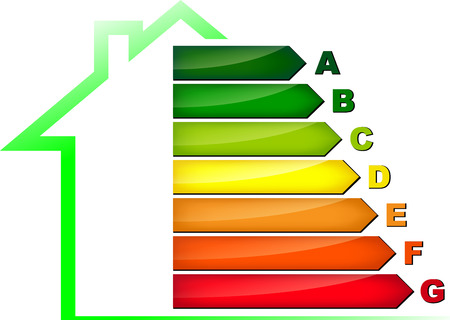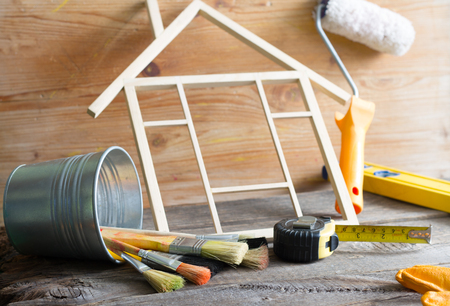Understanding the Needs of Older British Homes
Older British properties, particularly those built before the 1920s, are celebrated for their distinctive character and charm. These homes often feature solid brick or stone walls, ornate period detailing, and unique architectural flourishes that reflect Britain’s rich heritage. However, these same features present significant challenges when it comes to improving energy efficiency through insulation retrofits. Unlike modern homes with cavity walls designed to accommodate insulation materials, many heritage properties lack this essential gap, making traditional retrofit solutions unsuitable or even impossible. Furthermore, a considerable number of older homes are listed buildings or situated in conservation areas, meaning any alterations must comply with strict regulations to preserve their historic value. Navigating these rules requires careful planning and an understanding of both building regulations and local authority requirements. As a result, upgrading insulation in such properties is not just a matter of energy savings but also about respecting the architectural integrity and historical significance of these treasured homes.
2. Common Retrofit Insulation Methods
Retrofitting insulation in older British properties requires a thoughtful approach, taking into account the unique features and limitations of period homes. Many traditional buildings were constructed without modern insulation standards, making them susceptible to heat loss, draughts, and higher energy bills. Below, we outline some practical retrofit insulation solutions that are particularly well-suited for older properties across the UK.
Internal and External Wall Insulation
Walls are one of the primary sources of heat loss in older homes. There are two main approaches:
| Method | Description | Suitability for Older Properties |
|---|---|---|
| Internal Wall Insulation (IWI) | Adding insulation boards or stud walls with insulating material on the inside of external walls. | Good for solid wall homes where external appearance must be preserved; minimal impact on exterior features. |
| External Wall Insulation (EWI) | Applying insulation and a weatherproof finish to the outside of external walls. | Effective for improving thermal efficiency but can alter the building’s appearance; may require planning permission in conservation areas. |
Loft and Roof Insulation
Up to a quarter of heat can be lost through an uninsulated roof. Installing or upgrading loft insulation is often the most straightforward and cost-effective method for older British properties. Using mineral wool rolls or rigid boards between joists can significantly improve comfort and reduce heating costs. For properties with converted loft spaces, consider insulating between and over rafters while maintaining ventilation to prevent damp issues.
Floor Insulation
Many older homes have suspended timber floors, which allow cold air to circulate underneath. Lifting floorboards and installing mineral wool or rigid insulation boards between joists is an effective solution. Alternatively, draught-proofing gaps between floorboards offers a less intrusive option, especially in listed or historic properties where original features should be retained.
Draught-Proofing
Draught-proofing is one of the simplest ways to improve comfort and reduce energy consumption in older properties. Key areas include windows, doors, chimneys, and floorboards. Modern draught-excluders, secondary glazing units, and chimney balloons can be used without compromising traditional aesthetics. This method is highly recommended as a first step before undertaking more extensive insulation work.
Summary Table: Retrofit Solutions for Older Homes
| Area | Recommended Method | Main Benefit |
|---|---|---|
| Walls | IWI/EWI | Reduces heat loss through solid walls |
| Loft/Roof | Mineral wool or board insulation | Lowers heat escaping from roof space |
| Floors | Suspended floor insulation/draught-proofing | Prevents cold draughts from below |
| Draughts | Draught-proofing products | Improves comfort, quick to implement |

3. Overcoming Challenges in Retrofit Projects
Retrofitting insulation in older British properties comes with its own unique set of challenges, many of which stem from the need to respect the building’s historical character while improving comfort and energy efficiency. One of the primary obstacles is maintaining the traditional appearance of period homes. Many of these properties are listed or located in conservation areas, which means that any alterations must be sympathetic to original features such as cornices, sash windows, and stone facades. This often restricts the types of insulation materials and installation methods that can be used, requiring careful planning and sometimes bespoke solutions.
Another significant concern is moisture management and ventilation. Older buildings were typically constructed using breathable materials that allow moisture to pass through walls and roofs. Modern insulation, if not chosen and installed correctly, can trap moisture within the building fabric, potentially leading to damp problems, mould growth, or even structural damage over time. Therefore, it is crucial to select appropriate breathable insulation products and ensure adequate ventilation throughout the property. This might involve installing vapour-permeable membranes or upgrading existing ventilation systems to maintain a healthy indoor environment.
Navigating planning permissions can also present a hurdle for homeowners wishing to retrofit insulation. Local authorities may require detailed proposals demonstrating how the work will preserve the propertys character and comply with building regulations. It is advisable to consult with heritage officers or conservation specialists early in the process to understand local requirements and avoid costly delays. By addressing these challenges thoughtfully, it is possible to deliver effective retrofit insulation solutions that enhance comfort and energy performance without compromising the unique charm of Britain’s historic homes.
4. Benefits of Retrofitting Insulation
When considering retrofit insulation for older British properties, the long-term benefits far outweigh the initial investment. Homeowners often focus on immediate improvements, but the real rewards become clear over time as both comfort and efficiency are enhanced.
Improved Energy Efficiency
Older homes in the UK were rarely built with energy efficiency in mind, leading to significant heat loss through walls, roofs, and floors. By adding modern insulation solutions, such as internal or external wall insulation, loft insulation, and underfloor insulation, these properties can reach a much higher standard of thermal performance. This means your heating system won’t have to work as hard, resulting in lower carbon emissions and a reduced environmental footprint—a key concern as we move towards net-zero targets across Britain.
Lower Energy Bills
One of the most tangible benefits is the reduction in energy bills. Improved insulation means less heat escapes during winter and homes stay cooler in summer, reducing the need for excessive heating or air conditioning. Here’s a simple comparison:
Insulation Status |
Estimated Annual Heating Cost* |
|---|---|
No Insulation (Typical Pre-1930s Home) |
£1,500+ |
Partial Insulation |
£1,000–£1,200 |
Fully Retrofitted Insulation |
£700–£900 |
*Figures are indicative and will vary by property size and energy prices.
Increased Comfort All Year Round
Retrofitting insulation helps eliminate draughts and cold spots common in older British homes. Rooms maintain a more stable temperature throughout the year, making them warmer in winter and cooler during summer heatwaves. Improved comfort not only makes everyday living more pleasant but also supports better health by reducing damp and mould risks—issues frequently found in poorly insulated properties.
Enhanced Property Value
A well-insulated home is increasingly attractive to prospective buyers in the UK market. With EPC ratings now a major consideration for anyone looking to buy or rent, retrofitting insulation can boost your property’s rating significantly. This not only helps your home stand out but can also command a higher selling price. Additionally, many mortgage providers now look favourably on energy-efficient homes.
Summary of Long-Term Rewards
Benefit |
Description |
|---|---|
Energy Efficiency |
Reduces heat loss and carbon emissions; supports net-zero goals. |
Savings on Bills |
Lowers annual energy expenditure for homeowners. |
Comfort & Health |
Eliminates draughts; creates healthier living environments. |
Property Value |
Improves EPC rating; increases market value and desirability. |
The cumulative effect of these benefits makes retrofitting insulation a wise decision for owners of older British properties—helping future-proof your home against rising energy costs and changing regulations while enjoying greater comfort every day.
5. Ensuring Safety and Compliance
When retrofitting insulation in older British properties, prioritising safety and compliance is essential for both homeowners and installers. These homes often present unique challenges due to their age, construction materials, and existing features, making it critical to address health, safety, and legal requirements throughout the process.
Health and Safety Considerations
Before starting any retrofit insulation work, its vital to assess potential risks such as asbestos, lead paint, or structural weaknesses that are common in period properties. Professional installers should conduct thorough surveys to identify hazards and recommend appropriate mitigation measures. Ensuring good ventilation is another key aspect, as older homes can be prone to damp or mould if insulation is improperly installed. Always use qualified contractors who understand how to balance improved energy efficiency with maintaining healthy indoor air quality.
Legal Requirements and UK Regulations
There are several building regulations in the UK that govern retrofit insulation projects. Part L of the Building Regulations sets minimum energy efficiency standards for thermal performance, while special rules may apply if your property is listed or located within a conservation area. Its important to secure any necessary planning permissions before work begins, especially when external wall insulation is involved. Documentation proving compliance will not only protect you legally but may also enhance the value of your property.
Working with Professional Installers
Selecting a reputable installer is crucial. Look for professionals who are members of recognised trade bodies such as the National Insulation Association (NIA) or hold accreditations like TrustMark or PAS 2030. These credentials demonstrate adherence to industry best practices and high standards of workmanship. Dont hesitate to ask for references or examples of previous work on similar properties.
Top Tips for Homeowners
- Request a detailed written quote outlining all safety checks and regulatory considerations.
- Ensure all work meets current building regulations and obtain completion certificates.
- Communicate openly with your installer about concerns specific to older properties, such as preserving historic features.
By paying careful attention to safety protocols and legal requirements, you can achieve an effective retrofit insulation solution that enhances comfort and efficiency without compromising the integrity of your cherished British home.
6. Cost Considerations and Funding Options
When planning retrofit insulation for older British properties, understanding the typical costs involved is essential. The expenses can vary widely depending on the type of property, the insulation solution chosen, and the extent of work required. For example, loft insulation often ranges from £300 to £500 for an average semi-detached house, while solid wall insulation can cost anywhere from £7,000 to £15,000 due to the need for specialist installation methods. Underfloor insulation typically falls between £1,000 and £2,000, depending on access and materials.
While these figures may seem daunting, it’s worth noting that several grants and incentives are available to help homeowners manage these costs. Local councils across the UK regularly offer support through energy efficiency schemes, particularly for those on low incomes or living in fuel poverty. These can include partial or full funding for certain types of insulation.
At a national level, schemes such as the Energy Company Obligation (ECO) provide funding to eligible households for energy-saving home improvements. Additionally, homeowners should look into the Great British Insulation Scheme, which aims to make homes warmer and cheaper to heat by subsidising various retrofitting measures. There may also be region-specific programmes in Scotland, Wales, or Northern Ireland offering further assistance.
For those undertaking larger projects, some green finance options are available through high street banks or building societies. These might include lower interest rates on loans used specifically for energy efficiency upgrades or “green mortgages” rewarding properties with higher energy ratings.
It’s always wise to check with your local council and trusted advisory services like the Energy Saving Trust for up-to-date information on eligibility criteria and application processes. By taking advantage of available funding and incentives, retrofitting older homes becomes not only more affordable but also delivers long-term savings on energy bills—making it a practical investment in comfort and sustainability.


